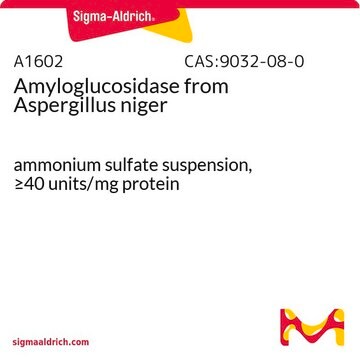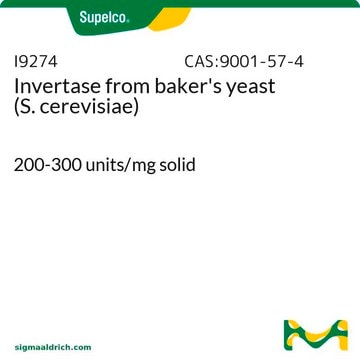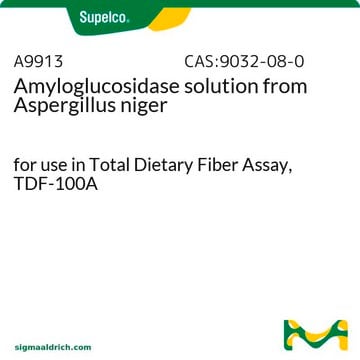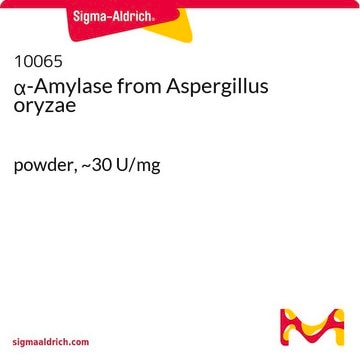Kluczowe dokumenty
ROAMYGLL
Roche
Amyloglucosidase
from Aspergillus niger
Synonim(y):
Aspergillus niger, disaccharidase-type a-glucosidase
Wybierz wielkość
665,00 zł
Wybierz wielkość
About This Item
665,00 zł
Polecane produkty
pochodzenie biologiczne
Aspergillus niger
Poziom jakości
Formularz
lyophilized
aktywność właściwa
6 U/mg (approximately 6 U/mg lyophilizate at +25°C with glycogen as the substrate)
~6 units/mg protein (At 25 °C with glycogen as the substrate.)
masa cząsteczkowa
97 kDa
opakowanie
pkg of 3,500 U (11202367001)
pkg of 500 U (11202332001)
producent / nazwa handlowa
Roche
optymalne pH
4.6-4.8
temp. przechowywania
2-8°C
Powiązane kategorie
Opis ogólny
Specyficzność
Zastosowanie
Działania biochem./fizjol.
Uwaga dotycząca przygotowania
The following concentrations should be taken as a guideline:
- Western blot: 1 to 10 μg/ml
Working solution: Tris-buffered saline containing 0.1% Tween 20.
Storage conditions (working solution): 2 to 8 °C
Inne uwagi
Hasło ostrzegawcze
Danger
Zwroty wskazujące rodzaj zagrożenia
Zwroty wskazujące środki ostrożności
Klasyfikacja zagrożeń
Resp. Sens. 1
Kod klasy składowania
11 - Combustible Solids
Klasa zagrożenia wodnego (WGK)
WGK 1
Temperatura zapłonu (°F)
does not flash
Temperatura zapłonu (°C)
does not flash
Wybierz jedną z najnowszych wersji:
Masz już ten produkt?
Dokumenty związane z niedawno zakupionymi produktami zostały zamieszczone w Bibliotece dokumentów.
Klienci oglądali również te produkty
Nasz zespół naukowców ma doświadczenie we wszystkich obszarach badań, w tym w naukach przyrodniczych, materiałoznawstwie, syntezie chemicznej, chromatografii, analityce i wielu innych dziedzinach.
Skontaktuj się z zespołem ds. pomocy technicznej











